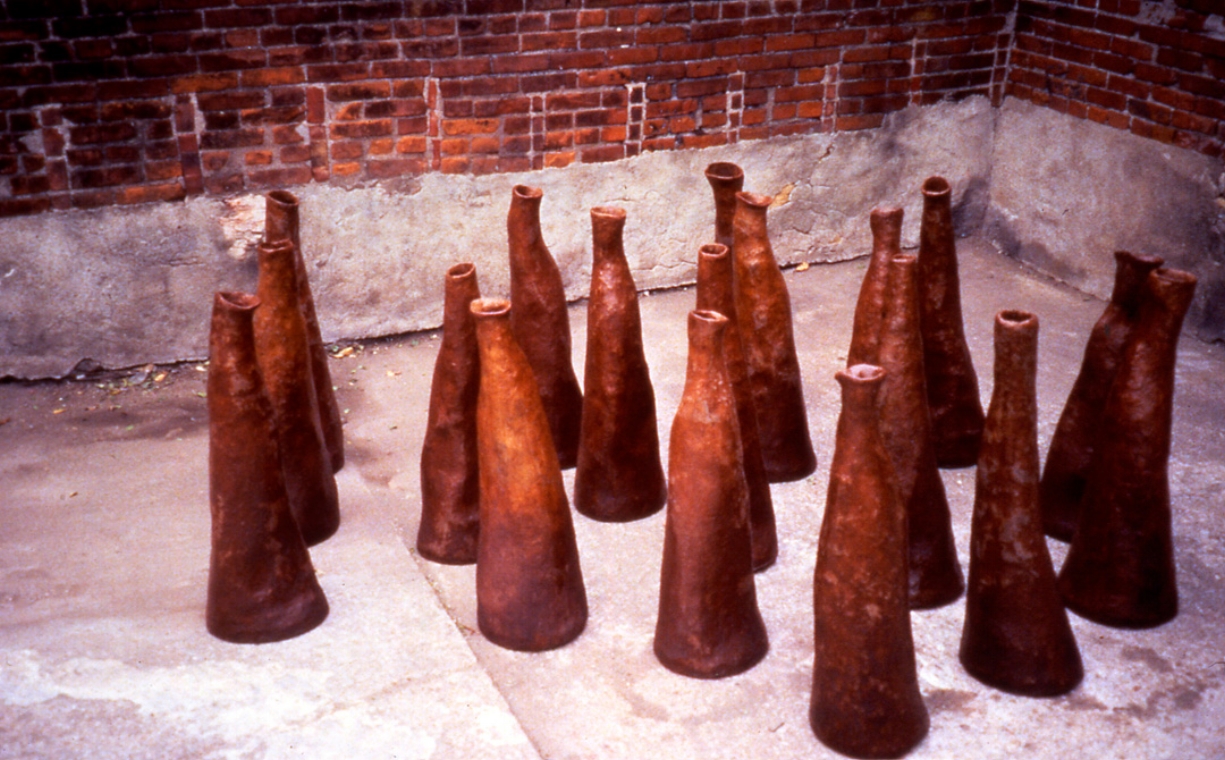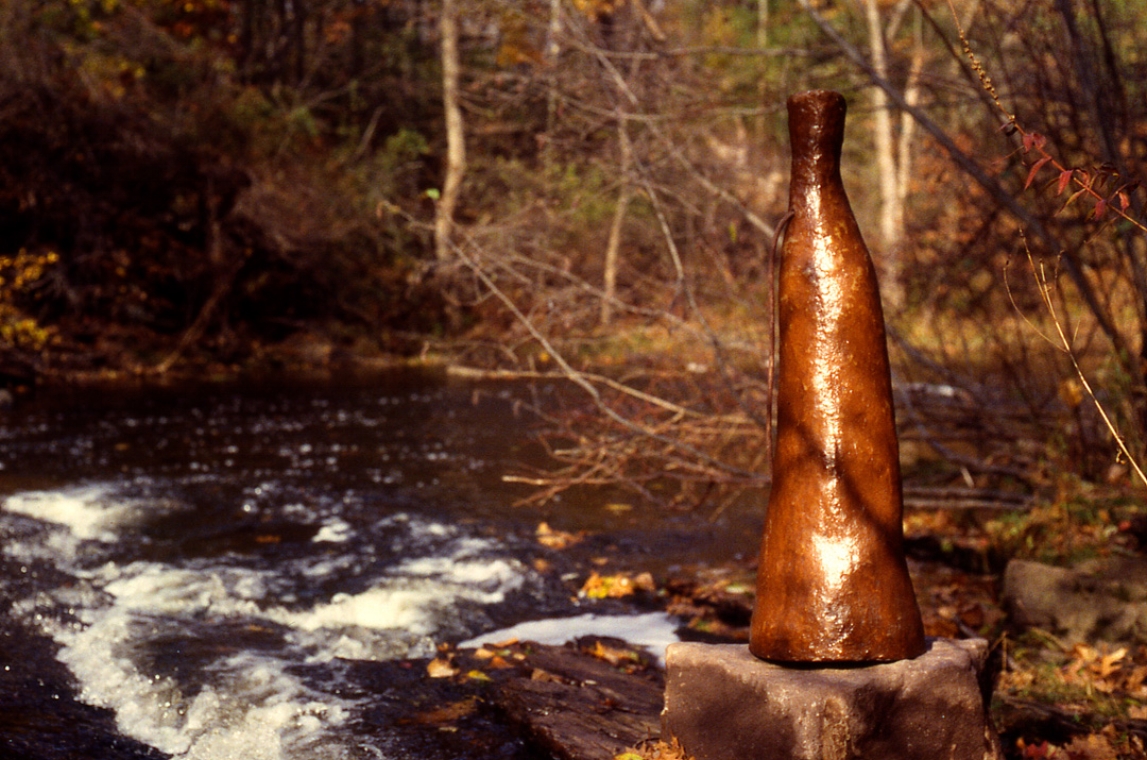Ear Mapping
"There is a geographical quality to listening...Of all the senses, hearing most resembles a contraption some ingenious plumber has put together from spare parts. Its job is partly spatial...Sounds have to be located in space, identified by type, intensity, and other features." - Dianne Ackerman, A Natural History of the Senses
My research for Ear-Mapping took me from the landscape to my body and back to the landscape. The sounds and geologic qualities at the site in the Park River's north branch originally inspired the project. At this site, currents of water flowing over rock create musical sounds; the rock forming the riverbed itself is remarkable. Here, the space opens up like a strange outdoor room with a buckled stone floor. The bedrock river bottom is a rich red-brown color; the surfaces of the rocks tilt repeatedly up and then down - all the ridges run in the same direction. Approximately 180 million years ago, in the Jurassic Period, central Connecticut was a valley into which rivers poured. The tilted rocks in the Park River were originally laid down in horizontal layers as sediments from these ancient rivers. Over time, minerals and compression cemented the sediments into sandstone; the rock layers were tilted eastward by tectonic forces due to a continental rift. This sort of brownstone, Portland Formation sandstone, underlies the entire upper Connecticut River valley and is the youngest rock in the state. (It was used to build the so-called "brownstones" in New York City.)" There are rocks in North Africa that are similar to those in southeastern New England, where they were once joined together prior to continental rifting.** (Notes from phone conversation with *Janet Stone, U.S. Geological Survey Office and **Pete McLean, Hartford Art School.)
When I was in grammar school I remember an entire year during which my school focused on listening - that experience marked me and resurfaces in this work. In Ear-Mapping, the first listening station was in the gallery foyer, the second is in the northwest corner of the courtyard, and so on. The path crossed the river twice over bridges until the river itself could be approached. From each station the way was clear because the next post was visible. Thus the walk began in the built environment and proceeded to the margins of the campus and the natural environment.
As cities become more crowded, urban sprawl is increasing; the margins between urban and rural are becoming less distinct. In the future, perhaps noise pollution in these ever-expanding cities will be so increased that sound quality might form the basis for retreats from the urban. The concept of the park as a quiet zone is not unthinkable. Siting Ear-Mapping in such a way that viewers must walk to discover it is, in itself, an act overlaid with many intentions. Walking with a focus on sound or listening invites a slower pace and increases sensory perception. The fact that the sculpture is dispersed calls upon the viewer to remember all the parts in order to experience the whole. In experiencing listening as geographical, the process is one of assembling sound into an aural picture of the landscape. The ear acts as the conduit between the outer world and the inner realm of each individual. Of central concern in this work is a recognition of the importance of retreat, of the human need to break from the oftentimes mechanical rhythm of contemporary life. The ear trumpets provide a way of "cupping our ears to the earth."







